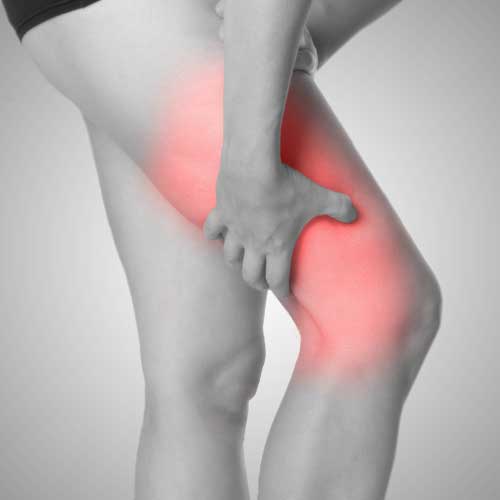Sciatica and Leg Pain

Sciatica is a term used by many people to describe any pain that radiates into the legs. However, do you have true sciatica? True sciatica is actually relatively uncommon and there are a host of other less severe conditions that can lead to pain in the legs. Examples may include:
- Lumbar facet sprain
- Sacroiliac joint sprain
- Iliotibial band syndrome
- Piriformis syndrome
- Hip pain
- Muscle strains
- Shin splints
So what is sciatica and what causes it?
Sciatica occurs due to the irritation of the spinal nerve roots in the lumbar spine and normally affects one leg; in younger people this will normally be due to a disc prolapse in the more elderly population spinal degeneration is often the issue. The disc is made of a 3 main sections: the harder cartilaginous outer layer called the annulus fibrosis, the softer inner portion called the nucleus pulposus and the end plates which attach the disc to the vertebral bodies above and below. The job of the disc is to provide a small amount of movement between the vertebrae and to resist compressive loads.
Damage to the disc is almost always the result of repeated forward bending. It is this repeated forward flexion that causes the inner nucleus pulposus to be forced backwards causing bulging or rupture of the outer annulus fibrosis. In turn this can lead to pressure being exerted onto the spinal nerves leading to what is known as sciatica.
The severity of the disc injury will dictate whether chiropractic treatment is suitable. In more moderate cases the use of spinal manipulation (go to the ‘clinical research’ section of the website for evidence of this), McKenzie exercises, exercise rehabilitation and lifestyle advice will significantly aid recovery. Unfortunately, once the disc has been damaged it will never return to its former state and patients will often need to continue with a life-long exercise program and will often benefit from supportive chiropractic care.
If you have severe pain and pins and needles in both legs simultaneously then this is a more serious condition as you may have developed cauda equina. If you are also experiencing bowel and/or bladder issues then you must go to hospital immediately.
Let us help you achieve your goal
To make an appointment simply call us at 01372 383 050 or fill out this form to send us an email.
